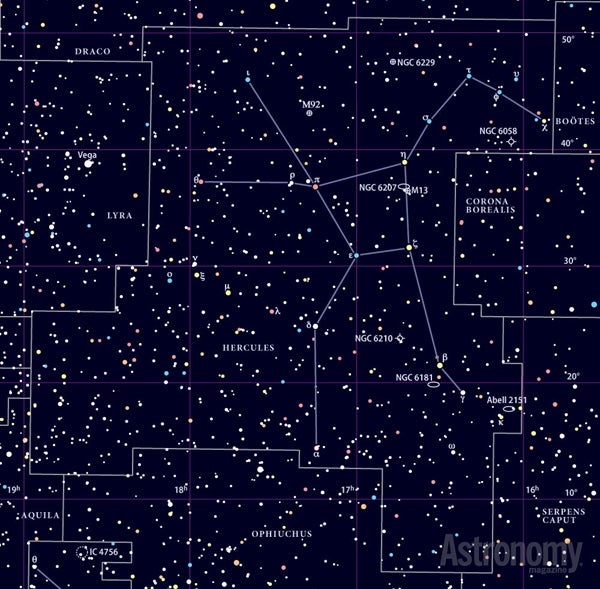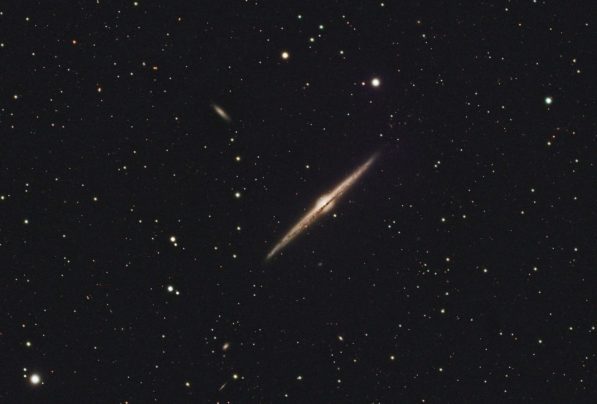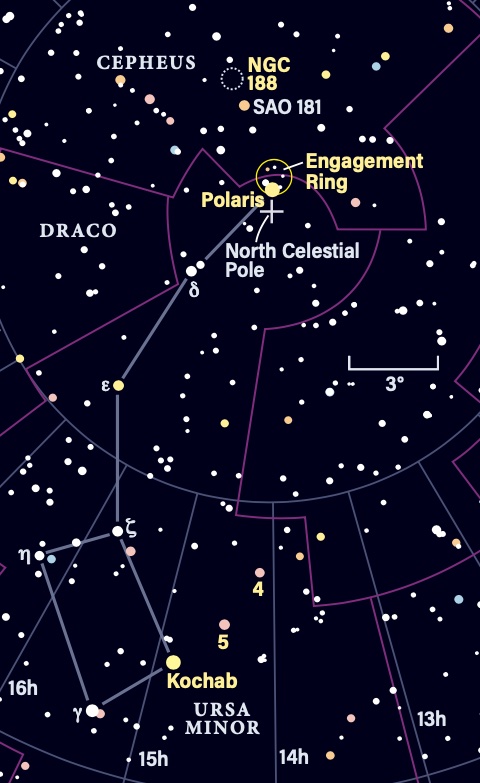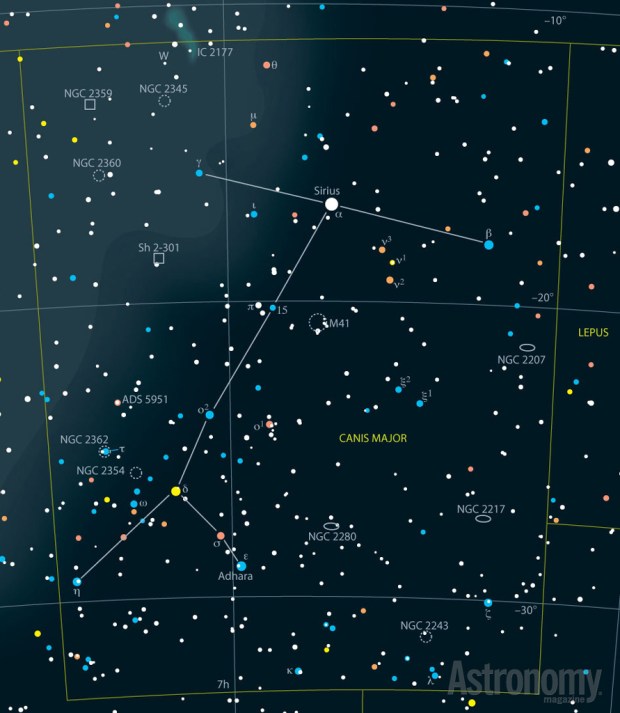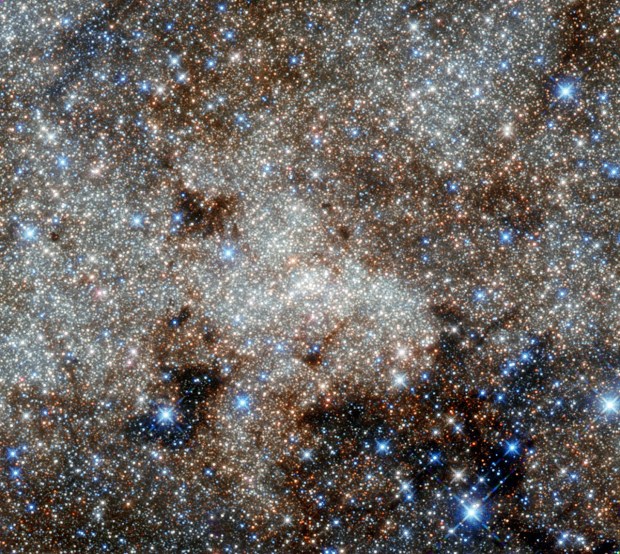Targets for August 14–21, 2014
Binoculars: Center of the Milky Way
Small telescope: Globular cluster M92
Large telescope: The Little Ghost (NGC 6369)
This week’s binocular object is the center of the Milky Way. You’ll find it from a dark site by generally looking toward the constellations Scorpius and Sagittarius. I stress “dark site.” You won’t see the Milky Way from in or near cities because of light pollution.
To hone in a bit closer, first find the magnitude 4.5 star 3 Sagittarii, located at Sagittarius’ western edge near the borders of Ophiuchus and Scorpius. Our galaxy’s core lies about 1° south-southwest of that star.
Binoculars will let you zero in on the exact spot. From 3 Sagittarii, move 1.5° south to the magnitude 8.8 open cluster Collinder 347. North of the cluster, the two brightest stars shine at magnitudes 8.8 and 8.6. They lie 13′ and 37′ from the cluster, respectively. The Milky Way’s center lies just to the west — that’s to the right through your binoculars — of the midpoint between those two stars.
Hercules’ other globular
This week’s small-telescope target is globular cluster M92 in Hercules. M92 also goes by the designation NGC 6341. It shines at magnitude 6.5 and measures 11.2′ across.
This visual treat sits 6.3° north of the star Pi (p) Herculis, one of four stars in Hercules’ famous asterism, the Keystone. If you’re a beginning observer who has seen the Hercules Cluster (M13), take the time to seek out this constellation’s other Messier object.
With stars nearly as bright as those in M13, M92 easily resolves through small telescopes. A 4-inch instrument at a magnification of 100x will reveal the slight oval nature of this cluster. Can you see it? The orientation is north-south.
At 200x under a steady sky, the core appears concentrated and huge, surrounded by an outer halo of myriad faint stars. High-power views through 14-inch and larger scopes will let you count stars until you tire of the process.
Boo!
This week’s large-telescope target is a planetary nebula called the Little Ghost in Ophiuchus. It also goes by NGC 6369. It lies 0.5° west-northwest of the magnitude 4.8 star 51 Ophiuchi.
The Little Ghost measures about 30″ across and glows at magnitude 11.4. Through an 8-inch telescope at 200x, you’ll see a circular ring with a slightly brighter northern half.
Although the central star shows up well in astroimages, you’ll need at least 14 inches of aperture to spot this magnitude 16 dim bulb. Through even larger instruments, the bright northern rim turns into a vivid streak buried in the ring’s nebulosity.
The Little Ghost got its common name because it appears as a small, ghostly cloud surrounding a faint dying star.
Expand your observing at Astronomy.com
StarDome
Check out Astronomy.com’s interactive StarDome to see an accurate map of your sky. This tool will help you locate this week’s targets.
The Sky this Week
Get a daily digest of celestial events coming soon to a sky near you.
Observing Talk
After you listen to the podcast and try to find the objects, be sure to share your observing experience with us by leaving a comment at the blog or in the Reader Forums.

